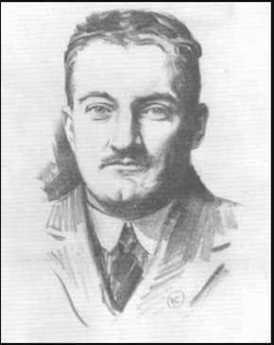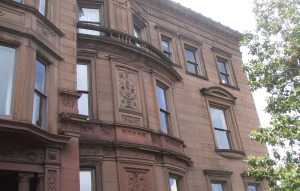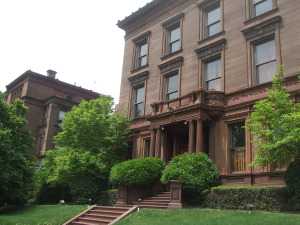Related Topics
Outlaws: Crime in Philadelphia
Even the criminals, the courts and the prisons of this town have a Philadelphia distinctiveness. The underworld has its own version of history.
North of Market
The term once referred to the Quaker district along Arch Street, and then to a larger district that had its heyday after the Civil War, industrialized, declined, and is now our worst urban problem area.
Historical Preservation
The 20% federal tax credit for historic preservation is said to have been the special pet of Senator Lugar of Indiana. Much of the recent transformation of Philadelphia's downtown is attributed to this incentive.
Philadelphia's Middle Urban Ring
Philadelphia grew rapidly for seventy years after the Civil War, then gradually lost population. Skyscrapers drain population upwards, suburbs beckon outwards. The result: a ring around center city, mixed prosperous and dilapidated. Future in doubt.
Food and Drink in Philadelphia
A flowing abundance of food sources made Philadelphia the capital of food and drink, right from earliest times.
Architecture in Philadelphia
Originating in a limitless forest, wooden structures became a "Red City" of brick after a few fires. Then a succession of gifted architects shaped the city as Greek Revival, then French. Modern architecture now responds as much to population sociology as artistic genius. Take a look at the current "green building" movement.

City of Homes
At first, there were limitless forests, but then the city burned down. After that, the "Red" city has long been built of brick. Philadelphia's masonry future is unknown, but it won't be wood.
Bergdoll the Rich Draft Dodger

|
| Grover Cleveland Bergdoll |
Grover Cleveland Bergdoll was one of the great playboys during the era between the Spanish American War and World War I. Although the money came from his beer-baron father, he was in the newspapers as one of the early owners of an airplane, one of the dare-devils racing about in open cars, and of course successful with girls.
His father Louis (1825-94) had emigrated from Germany, bringing with him the new technique of making lager beer by brewing it in the cold, and quickly exploiting its popularity into thousands of barrels of beer a day. Although it is always hard to say just who invented a technique like that, there seems little doubt that Bergdoll & Schemm was responsible for transforming the area north of Spring Garden Street into a booming area of breweries, consuming huge amounts of ice and ice water, wood staves for beer barrels, horses to drag beer to the beer gardens, and energizing railroads to import raw materials and carry away the barrels of beer. The refrigeration industry flourished and spread out into air conditioning. Bergdoll was a mighty force in Philadelphia industry.

|
| Bergdoll Mansion |
The Bergdoll house was located on 21st Street, not far from the Eastern State Penitentiary, in the very upscale neighborhood called Fairmount. The neighborhood was isolated by the "Chinese Wall" of the Pennsylvania Railroad, and more importantly by the slashing through of the Benjamin Franklin Parkway. Eventually, the advent of Prohibition destroyed Philadelphia's brewery industry and its associated beer gardens. The Fairmount region declined into a slum, particularly after the 1929 Stock Market Crash, and upper crust Philadelphia fled blocks and blocks of huge mansions, too big to heat and clean, and also too big and substantial to tear down. So the Bergdoll mansion has been there all along, but there was just no one around to look at it. With the gentrification of the Fairmount region at the turn of the 21st Century, there it sits. a brownstone Pyramid, or Parthenon. A lot of wild stories circulate in the neighborhood, but very few of the new neighbors know very much about it.
It's just possible that the brownstone Widener mansion on North Broad Street is bigger, and certainly the Elkins, Stotesbury and Montgomery mansions in the far suburbs are a lot bigger. But this brownstone edifice in the center of town is impressively large enough to count for something, filling roughly half a square block if you include what look like stables of the same architectural style, and the double houses which suggest some members of the family lived next door. Even these smaller outbuildings are a great deal larger than the average city mansion.

|
| Bergdoll Mansion |
The size of the place makes it easier to understand how Grover Cleveland Bergdoll could be hidden there as a draft dodger for years. In fact, local rumor often has it that he stayed there for thirty years, but it was really only about three. A book by Roberta E. Dell, called The United States Against Bergdoll supplies considerably more detail. One has to suppose that this strongly German family was opposed to American participation in World War I, and the government's violent reaction to his draft objection reflected concern that the very large German-American population might rise up and interfere with Woodrow Wilson's decision to enter the War on the Allied side. In any event, Grover's mother hid him away in the extensive mansion complex until that war seemed safe over, but he was immediately apprehended and put on trial when he emerged. Somehow or other, he managed to convince the authorities that he should be released under guard in order to go dig up an enormous fortune in gold that he had buried. The agents guarding him were put up as guests in the big mansion, apparently unable to resist the big treat. But it was a ruse, a getaway was waiting and off he sped, ending up in exile in a little town a few miles from Heidelberg, Germany. It was there that he married a local German girl and spent an apparently comfortable exile until after the Second World War. There were rumors and stories, however. A couple of kidnappers broke in on him in an apparent effort to take him over the French border, but Bergdoll killed one of them. Even after World War II, all was not forgiven; he came home, was immediately apprehended and tried, and spent a brief time in jail. He died in 1966.
Those who are sufficiently fascinated by his story, can even live in his house. It's been renovated, and rents out as Bergdoll Mansion Apartments.
Originally published: Sunday, May 09, 2010; most-recently modified: Wednesday, May 15, 2019
| Posted by: ron bergdoll | Feb 9, 2017 4:01 PM |
| Posted by: Dwight | Jan 14, 2017 7:16 PM |
| Posted by: Louis E Bergdoll | Feb 28, 2014 6:11 PM |
| Posted by: michael | Jun 13, 2013 12:17 PM |
| Posted by: elsie eschert xavier | Jan 30, 2012 3:00 PM |